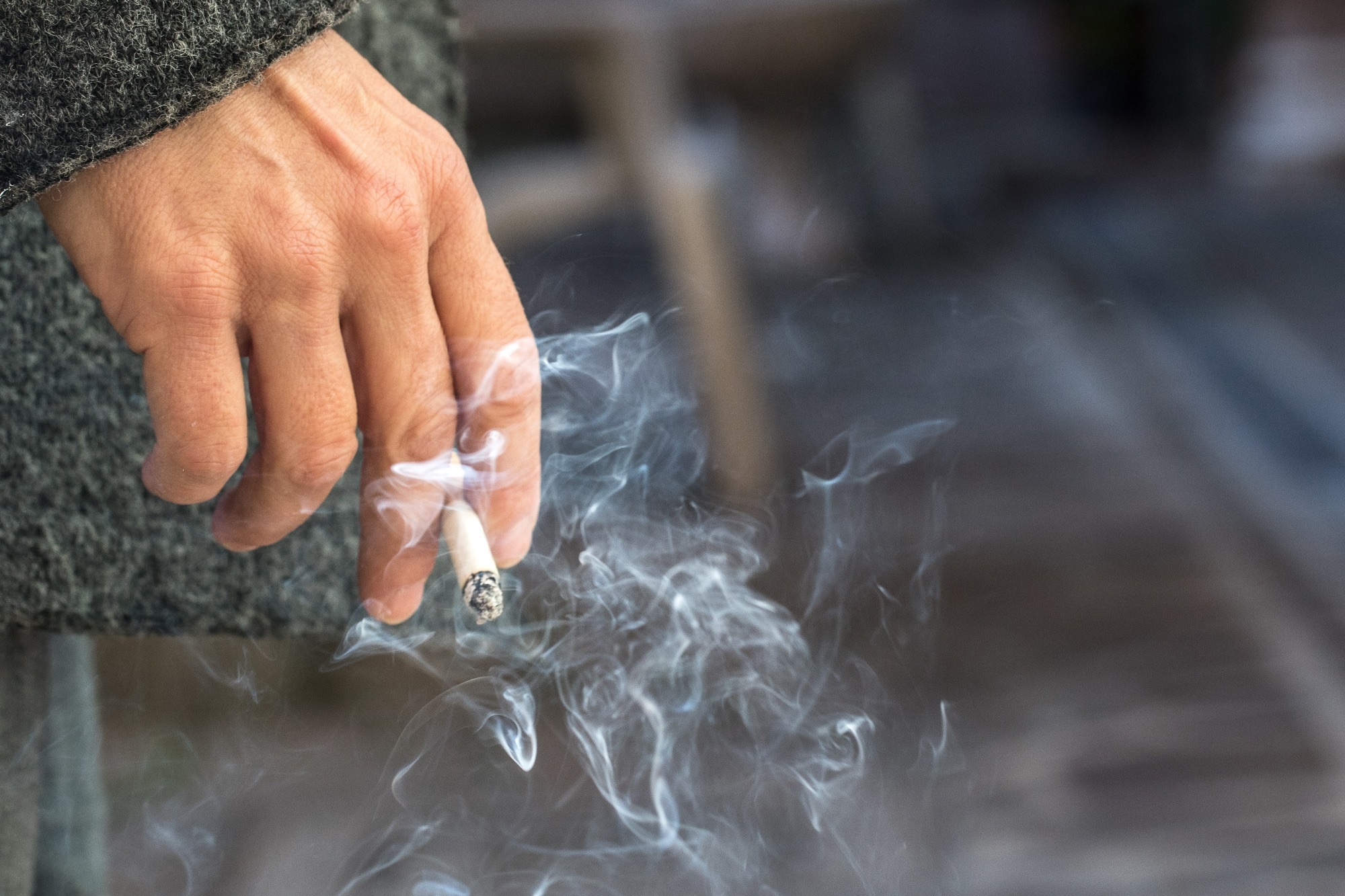Home » Health News »
Study examines health impacts of second-hand cigarette smoke exposure
In a recent study published in Genes, researchers evaluated the effects of chronic second-hand smoke (SHS) exposure on cognition, behavior, neuropathology, and metabolism.

Background
SHS exposure is prevalent globally and linked to neurological impairments and neurodegenerative diseases such as mild cognitive impairment (MCI), dementia, and stroke. However, the biological mechanisms by which second-hand smoke affects brain cells require elucidation, warranting further research.
Studies have highlighted the influence of gut microbial dysbiosis on neurodegeneration. The gut microbiota can affect cognitive and behavioral performance via the gut-brain axis. SHS inhalation can affect the intestinal tissue and alter the gut microbial composition. These findings raise concerns regarding cognitive decline associated with gut alterations, which are induced by SHS.
About the study
In the present study, researchers investigated whether SHS exposure induces gut microbial alterations, impacting cognitive performance, behavior, and neuropathology.
The team employed wild-type (WT) murine animals and a human tau-expressing murine model of Alzheimer's disease, who were exposed to 30 mg per cubic meter of SHS over 10 months. The researchers investigated the impact of SHS on the formation of cells labeled with p21, an early biological marker of senescence that is enhanced in bronchial cells after exposure to cigarette smoke.
Histopathological, immunohistochemical, and genetic analyses were performed on murine lung and brain tissues. Damage to deoxyribonucleic acid (DNA) caused by oxidative stress was assessed using 8-hydroxy-2′-deoxyguanosine (8-OHdG) levels.
Furthermore, the levels of the DNA repair marker AP endonuclease 1 (APE1) were compared in SHS- and air-exposed mouse rats. Following SHS exposure, the levels of p21 and beta-galactosidase were also measured in mice.
The researchers also looked at whether oxidative DNA damage caused by SHS was connected to object recognition test performance. Fecal samples and tissues were collected from all 62 murine mice, and the feces were sequenced for the 16S ribosomal ribonucleic acid (rRNA) gene. Polymerase chain reaction (PCR) and amplicon sequence variant (ASV) clustering studies were also performed.
To assess hippocampus-dependent memory and learning, water maze and Y maze tests were used. Multivariate regression modeling was used to investigate the relationships between gut alpha and beta diversity and factors such as SHS exposure, genotype, sex, and 10 behavioral physiological covariates.
Results
The SHS exposure influenced the gut microbial composition, biodiversity, and evenness in a gender-dependent manner. This change in gut microbiome biodiversity and composition was similarly related to various cognitive function measures, demonstrating that the intestinal microbiota contributes to the impact of second-hand smoke exposure on cognitive abilities.
The proportion of cells labeled with 8-OHdG within the CA1 hippocampal site was likewise related to new object recognition test performance, concordant with the urinary and serological 8-OHdG levels. In SHS-exposed mice compared to sham-exposed mice, nuclear staining of cells labeled with p21 was more pronounced in bigger cells situated within the prefrontal cortical region and CA1 neurons in the hippocampus.
Furthermore, compared to air-exposed mice, SHS-exposed animals had a considerably higher percentage of tagged prefrontal cortex cells and the CA1 hippocampal region. The findings indicated that SHS exposure may accelerate brain aging characterized by cell damage caused by oxidative stress. The brains of wild-type mice, especially male mice, were vulnerable to the effects of prolonged SHS exposure.
APE1 levels in the prefrontal cortex were greater in SHS-exposed murine mice than in air-exposed murine animals. Male mice exposed to SHS had considerably more alpha diversity in their microbiomes than female mice. Female mouse microbiome diversity was equivalent to that of air-exposed mouse microbiome diversity.
The gut microbiome's alpha diversity was also linked to numerous indicators of cognitive ability. While male and female mouse microbiomes appear to be statistically identical in air-exposed mice, male and female mouse microbiomes take on unique compositions compared to one another in SHS-exposed animals.
The water and Y maze tests’ findings indicated a link between gut microbiota alpha diversity and hippocampus-dependent memory and learning. However, contradictory associations between microbiological richness and the two water maze tests were found, demonstrating that the link between alpha diversity and spatial memory retention was complicated.
Conclusions
Overall, the study findings showed that gut microbial composition, richness, and evenness were impacted by SHS exposure, and these changes were linked to cognitive impairments. SHS exposure significantly impacted cognitive performance, with increased 8-OHdG levels in the CA1 hippocampal region linked to the novel object recognition test performance.
In particular, the proportion of 8-OHdG-labeled cells in the CA1 region negatively correlated with the frequency of and time spent exploring novel objects. In addition, SHS exposure may result in accelerated brain aging through oxidative stress-induced injury.
- Raber J, Stagaman K, Kasschau KD, et al. (2023). Behavioral and Cognitive Performance Following Exposure to Second-Hand Smoke (SHS) from Tobacco Products Associated with Oxidative-Stress-Induced DNA Damage and Repair and Disruption of the Gut Microbiome. Genes, 14, 1702. doi: 10.3390/genes14091702. https://www.mdpi.com/2073-4425/14/9/170
Posted in: Medical Research News | Medical Condition News
Tags: Aging, Alzheimer's Disease, Brain, Cell, Chronic, Cigarette, Cognitive Function, Cortex, Dementia, DNA, DNA Damage, Dysbiosis, Endonuclease, Frequency, Gene, Genes, Genetic, Gut-Brain Axis, Hippocampus, Metabolism, Microbiome, Neurodegeneration, Neurodegenerative Diseases, Neurons, Oxidative Stress, Polymerase, Polymerase Chain Reaction, Research, Ribonucleic Acid, Stress, Stroke, Tobacco

Written by
Pooja Toshniwal Paharia
Dr. based clinical-radiological diagnosis and management of oral lesions and conditions and associated maxillofacial disorders.

